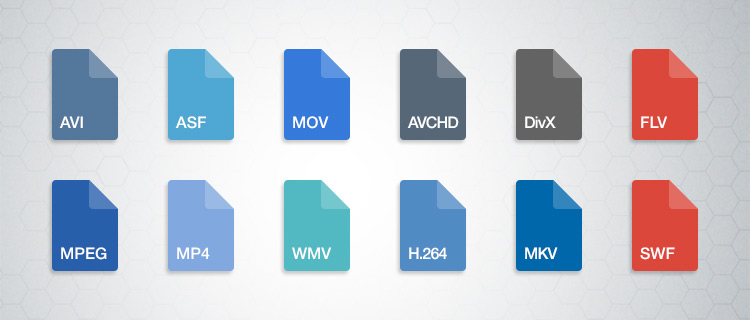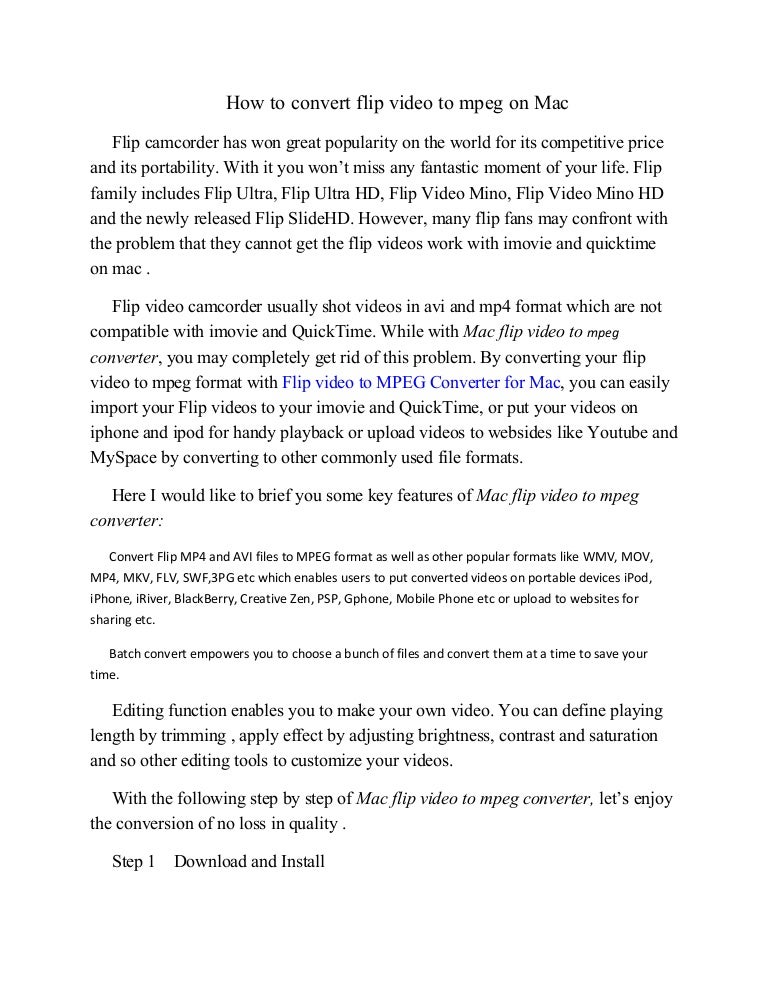Picture Formats For Mac
The Picture Format tab is contextual. It appears only when a picture is selected & disappears when not needed. It appears only when a picture is selected & disappears when not needed. Additionally you can right-click a picture & select Format Picture to bring up the Format Picture Task Pane which remains displayed until you dismiss it. Click the + at the end of that line, and create a field with Kind, Image, and TIFF. Repeat step 6 for GIF and PNG (and BMP, if you think you have any of that format, primarily used in Windows).
Also on Guiding Tech
Top 4 Amazing Tools to Capture Scrolling Screenshots on macOS
Read More1. Xee
Xee is quite a straightforward replacement of Preview. Despite the similarities, Xee steps ahead with a few unique features. As expected, the Previews and Next buttons for browsing between images are placed at the top left corner. The other options appear neatly placed next to them at the top.Xee's status bar shows additional details about the image, such as its dimensions, file type, file size, color details, and more. The only thing I found odd that Xee did not pick up the Dark them of my macOS. I had to navigate to Xee's Preferences > Style and then pick Black.Xee is simply an Image Viewer. That means if you are looking for an Image Viewer with editing options, you are out of luck here. This app is streamlined, fast, and quite responsive.Unfortunately, Xee isn't free, and you will have to pay $3.99 to buy it from the App Store on your Mac.Download Xee2. XnView MP
The XnView is more than an image viewer. It's a popular cross-platform media management software, and Windows users love it so much that many want to set XnView as the default image viewer on Windows 10. With support for over 500 image formats, the developers lock quite a bunch of handy features behind the paywall. However, the app lets you customize the layout of the app.When the app is open, navigate to View>Layout and select Free from the subsequent menu. After that, you can click on the x-shaped icon irrelevant windows. In short, you get enough viewing and sorting modes that you can keep changing between them to suit your requirements. The app's performance setting allows you to squeeze out the maximum from your on-board GPU chip. That means, the processing and caching will be faster on beefed-up MacBook Pros.Download XnView MP3. Phiewer
The free version of Phiewer lets you view one image at a time. When you open a photo, it shows the main image with a collection of thumbnails on the left side. While being one of the fastest image viewers to open a photo, Phiewer shows the thumbnails on the left with an option to start a slideshow directly. However, the blurring effect offering backdrop might just steal your attention for a bit.Phiewer stands out by displaying the basic details about a photo distinctly on its interface. Besides photos, it also supports a variety of media formats. That will become apparent as soon as you sync your media folders with the app. You might enjoy the readymade bouquet of options, such as different effects, to try out on photos. You can pay for the Pro version to unlock alignment, cropping controls, applying filters, adjusting granular aspects, and more.
 You may call it a simpler version of the XnView MP and use it accordingly.Get Phiewer
You may call it a simpler version of the XnView MP and use it accordingly.Get Phiewer4. Lyn
Lyn is like a proper replacement of the Photos app with the Image Viewer capabilities built-in. The interface of Lyn app is quite familiar so that you won't feel out of place at all. When you launch it initially, you will notice the basic adjustment options at the top — they will remind you of Preview.Apart from viewing options, you can also link other cloud-based services such as Flickr, Facebook, Dropbox, and more. The i-shaped button is the hidden information panel that will present you with details of the image ranging from resolution to metering mode. If you check the photos clicked using your digital camera, DSLR, or Mirrorless, then Lyn is a suitable image viewer app. Of course, you can always customize the layout from the preferences for quick access to the frequently used folders. Lyn supports a variety of picture formats, and you can quickly share photos with your friends over email, Flickr, or even Smugmug. The basic version comes with a 15-day trial, which is decent enough to try it out. Otherwise, you will have to cough out $20 as a one-time payment to get rid of the trial period limitation.Get Lyn App
5. qView
If you are looking for a no-nonsense image viewer for all your photos and screenshot, then this is the best option. Without mincing words, qView is one of the minimalist photo viewer that looks amazing with the dark theme on the macOS.qView is also available on Windows, which makes it a perfect cross-platform tool to use for viewing photos on both the platforms. It works best as the no-nonsense photo viewer on your Mac. Of course, it doesn't offer editing or tweaking options.Download qViewBonus Recommendation: ApolloOne
The ApolloOne is one of the rare apps that utilize the Core Image graphics and hardware features such as multi-threading to deliver the best photo gallery and organization experience.It can also handle RAW photos and support over 1000 digital cameras. Also, it lets you tinker around with the EXIF details. You can always try out its Slideshow to view a series of photos. This feature-rich image viewer can be purchased to unlock support and other helpful settings.Get ApolloOne
Also on Guiding Tech
How to Move Photos from iPhone to Google Photos
Read MoreChange Is Good
While Apple's Preview gets the basic job done, it does leave a lot to be desired. Specifically for folks who move from or use macOS alongside Windows 10. My favorite is ApolloOne since it supports a variety of cameras for importing images directly, and I often use qView just for browsing photos on my Mac. So which one will you pick?Next up:Wondering what photo backup service to use with iPhone? Check our list of top 5 iCloud Photo backup alternatives for iPhone.
The above article may contain affiliate links which help support Guiding Tech. However, it does not affect our editorial integrity. The content remains unbiased and authentic.Read NextTop 5 iCloud Photo Backup Alternatives for iPhoneAlso See#apple
 #macos
#macos Did You Know
You can see the remaining charge of your Apple AirPods on the battery widget of your iPhone.
More in Mac
Top 4 Ways to Fix Mac Desktop Icons Missing or Not Showing
The icon depicts an internal hard drive within a generic file icon. | |
| Filename extension | |
|---|---|
| Internet media type | application/x-apple-diskimage |
| Uniform Type Identifier (UTI) | com.apple.disk-image |
| Developed by | Apple Inc. |
| Type of format | Disk image |
Apple Disk Image is a disk image format commonly used by the macOS operating system. When opened, an Apple Disk Image is mounted as a volume within the Macintosh Finder.
An Apple Disk Image can be structured according to one of several proprietary disk image formats, including the Universal Disk Image Format (UDIF) from Mac OS X and the New Disk Image Format (NDIF) from Mac OS 9. An Apple disk image file's name usually has '.dmg' as its extension.
Features[edit]
Apple Disk Image files are published with a MIME type of application/x-apple-diskimage.
Different file systems can be contained inside these disk images, and there is also support for creating hybrid optical media images that contain multiple file systems.[1] Some of the file systems supported include Hierarchical File System (HFS), HFS Plus, File Allocation Table (FAT), ISO9660 and Universal Disk Format (UDF).[1][2]
Apple Disk Images can be created using utilities bundled with Mac OS X, specifically Disk Copy in Mac OS X v10.2 and earlier and Disk Utility in Mac OS X v10.3 and later. These utilities can also use Apple disk image files as images for burning CDs and DVDs. Disk image files may also be managed via the command line interface using the hdiutil utility.[3]
In Mac OS X v10.2.3, Apple introduced Compressed Disk Images[4] and Internet-Enabled Disk Images for use with the Apple utility Disk Copy, which was later integrated into Disk Utility in 10.3. The Disk Copy application had the ability to display a multilingual software license agreement before mounting a disk image. The image will not be mounted unless the user indicates agreement with the license.[5]
An Apple Disk Image allows secure password protection as well as file compression, and hence serves both security and file distribution functions; such a disk image is most commonly used to distribute software over the Internet.
History[edit]
Format For Mac Os
Apple originally created its disk image formats because the resource fork used by Mac applications could not easily be transferred over mixed networks such as those that make up the Internet. Even as the use of resource forks declined with Mac OS X, disk images remained the standard software distribution format. Disk images allow the distributor to control the Finder's presentation of the window, which is commonly used to instruct the user to copy the application to the correct folder.
A previous version of the format, intended only for floppy disk images, is usually referred to as 'Disk Copy 4.2' format, after the version of the Disk Copy utility that was used to handle these images.[1] A similar format that supported compression of floppy disk images is called DART.[1][6]
New Disk Image Format (NDIF) was the previous default disk image format in Mac OS 9,[1] and disk images with this format generally have a .img (not to be confused with raw .img disk image files) or .smi file extension. Files with the .smi extension are actually applications that mount an embedded disk image, thus a 'Self Mounting Image', intended only for Mac OS 9 and earlier.[7][2]
Universal Disk Image Format (UDIF) is the native disk image format for Mac OS X. Disk images in this format typically have a .dmg extension.[1]
File format[edit]
Apple has not released any documentation on the format, but attempts to reverse engineer parts of the format have been successful. The encrypted layer was reverse engineered in an implementation called VileFault (a spoonerism of FileVault).[8]
Apple disk image files are essentially raw disk images (i.e. contain block data) with some added metadata, optionally with one or two layers applied that provide compression and encryption. In hdiutil, these layers are called CUDIFEncoding and CEncryptedEncoding.[1]
UDIF supports ADC (an old proprietary compression format by Apple), zlib, bzip2 (as of Mac OS X v10.4), and LZFSE (as of Mac OS X v10.11)[9] compression internally.
Metadata[edit]
The UDIF metadata is found at the end of the disk image following the data. This trailer can be described using the following C structure.[10] All values are big-endian (PowerPC byte ordering)
The XML plist contains a blkx (blocks) key, with information about how the preceding data fork is allocated. The main data is stored in a base64 block, using tables identified by the magic 'mish'. This 'mish' structure contains a table about blocks of data and the position and lengths of each 'chunk' (usually only one chunk, but compression will create more).[10] The data and resource fork information is probably inherited from NDIF.
Encryption[edit]
The encryption layer comes in two versions. Version 1 has a trailer at the end of the file, while version 2 (default since OS X 10.5) puts it at the beginning. Whether the encryption is a layer outside of or inside of the blkx metadata (UDIF) is unclear from reverse engineered documentation, but judging from the vfcrack demonstration it's probably outside.[8]
Utilities[edit]
There are few options available to extract files or mount the proprietary Apple Disk Image format. Some cross-platform conversion utilities are:
- dmg2img was originally written in Perl; however, the Perl version is no longer maintained, and the project was rewritten in C. It extracts the raw disk image from a DMG, without handling the file system inside. UDIF ADC-compressed images (UDCO) have been supported since version 1.5.[11]
- DMGEXtractor is written in Java with GUI, and it supports more advanced features of dmg including AES-128 encrypted images but not UDCO images.[12]
- The Sleuth Kit. Handles the DMG format, HFS+, and APFS.
Most dmg files are unencrypted. Because the dmg metadata is found in the end, a program not understanding dmg files can nevertheless read it as if it was a normal disk image, as long as there is support for the file system inside. Tools with this sort of capacity include:
Picture Formats For Mac Keyboard
- Cross-platform: 7-zip (HFS/HFS+), PeaZip (HFS/HFS+).
- Windows: UltraISO, IsoBuster, MacDrive (HFS/HFS+).[13]
- Unix-like: cdrecord and
mount(e.g.mount -o loop,ro -t hfsplus imagefile.dmg /mnt/mountpoint).[14][15]
Tools with specific dmg support include:
- Windows:
- Transmac can handle both UDIF dmgs and sparsebundles, as well as HFS/HFS+ and APFS. It is unknown whether it handles encryption.[16] It can be used to create bootable macOS installers under Windows.[17]
- A free Apple DMG Disk Image Viewer also exists, but it is unknown how much what it actually supports.[18]
- Unix-like:
- darling-dmg is a FUSE module enabling easy DMG file mounting on Linux. It supports UDIF and HFS/HFS+.[19]
See also[edit]
Picture Formats For Mac Computers
References[edit]
- ^ abcdefg'hdiutil(1) Mac OS X Manual Page'. Archived from the original on 2016-05-14. Retrieved 2016-05-14.
- ^ ab'Mac OS X: Using Disk Copy disk image files'. Archived from the original on 2013-12-19. Retrieved 2013-04-25.
- ^
hdiutil(1)– Darwin and macOS General Commands Manual - ^'Re: Some apps refuse to launch in 10.2.8! (OT, but very important)'. Archived from the original on 2014-01-17.
- ^'Guides'. Apple. Archived from the original on 2009-03-06. Retrieved 2010-10-27.
- ^'DART 1.5.3: Version Change History'. Archived from the original on 2013-12-19. Retrieved 2013-04-25.
- ^'Software Downloads: Formats and Common Error Messages'. Archived from the original on 2010-12-24. Retrieved 2009-05-06.
- ^ ab'VileFault'. 2006-12-29. Archived from the original on 2007-01-09. Retrieved 2010-10-27.
- ^Michael Tsai (2015-10-07). 'LZFSE Disk Images in El Capitan'. Archived from the original on 2017-04-09. Retrieved 2017-04-09.
- ^ ab'Demystifying the DMG File Format'. Archived from the original on 2013-03-17.
- ^'dmg2img'. Archived from the original on 29 November 2010. Retrieved 2010-10-27.
- ^'DMGExtractor'. Archived from the original on 2011-01-02. Retrieved 2011-01-03.
- ^MacDrive Features / Boot Camp / System Requirements /. 'MacDrive Home page'. Mediafour. Archived from the original on 4 October 2010. Retrieved 2010-10-27.
- ^'How To Convert DMG To ISO in Windows, Linux & Mac'. Archived from the original on 2010-03-07.
- ^'Convert DMG To ISO using PowerISO'. Archived from the original on 2009-05-02. Retrieved 2009-02-15.
- ^'About TransMac for Windows'. www.acutesystems.com.
- ^'Convert'. www.winytips.com. winytips. Retrieved 5 May 2020.
- ^Olivia Dehaviland (2015-03-03). 'Apple DMG Disk Image Viewer'. DataForensics.org. Archived from the original on 2015-04-02. Retrieved 2015-03-10.
- ^'darling-dmg'. darling-dmg. Retrieved 29 March 2015.
External links[edit]
- Apple Developer Connection A Quick Look at PackageMaker and Installer
- O'Reilly Mac DevCenter Tip 16-5. Create a Disk Image from a Directory in the Terminal